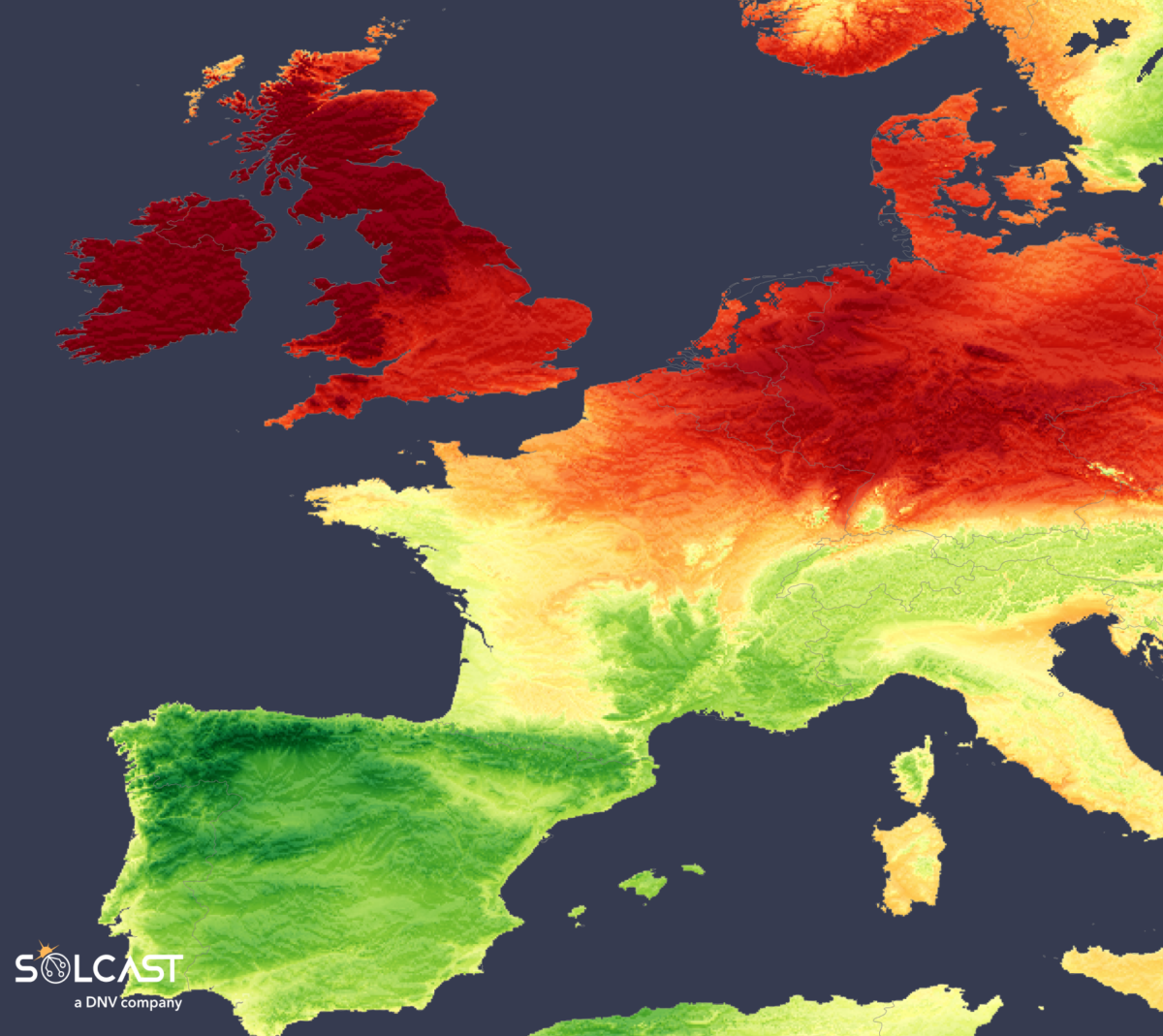
In a new weekly update for pv magazine, Solcast, a DNV company, reports that solar irradiance in the British Isles reached up to 35% above the norm during the first half of May, while The Netherlands, Belgium, and Germany each recorded irradiance levels around 25% above average.
The British Isles have enjoyed an unusually bright start to May, with some areas seeing even higher irradiance than sites in Spain, according to analysis using the Solcast API. A persistent high pressure system over the North Atlantic has driven clear skies and hot temperatures across northwestern Europe, while stormy, moisture-laden systems have weighed down solar performance across the Iberian Peninsula.
During the first half of May, irradiance levels in the British Isles reached up to 35% above the norm, continuing an exceptional run of solar-friendly weather. The Netherlands, Belgium and Germany each recorded irradiance levels around 25% above average. This burst of sunshine has been linked to a stable high pressure system over the Atlantic, which has delivered dry easterly winds from continental Europe, suppressing cloud formation across the region. In London, temperatures peaked at a monthly record of 29°C on May 1.
The high irradiances observed over the British Isles in May follow on from extreme conditions in April and are a continuation of the effects of persistent high pressure. Irradiance during April was significantly above average, with the south of England recording levels 20% above the long-term mean. The UK Met Office declared it the sunniest April since records began in 1910. This prolonged sunny weather was driven by a persistent ridge of high pressure, which contributed to both elevated irradiance and unusually hot conditions throughout the region.
While northern Europe basked in sun, the Iberian Peninsula faced a far less favourable pattern for PV generation. Southern Europe experienced cloudy, storm-filled conditions that substantially reduced irradiance. By mid-May, irradiance levels were down around 20% across much of Spain and Portugal, as well as southern France.
Dublin, typically far behind Madrid in terms of solar generation, has seen more irradiance (94.69 kWh/m²) than the Spanish capital (87.48 kWh/m²) up to May 15. This inversion of typical solar patterns is striking; as you can see in the above, this is an anomaly from recent years, with conditions in Ireland approaching ‘normal Spanish weather’. To highlight the scale of this anomaly, in an average year, Madrid would have registered around 100.25 kWh/m², well ahead of Dublin’s 70.33 kWh/m².
These poor conditions were driven by an enhanced jet stream that allowed anomalous low pressure systems to impact southwestern Europe. Combined with moist air masses from the south, this resulted in outbreaks of thunderstorms and heavy rain. Some regions in Spain and France also reported large hailstones, raising concerns about potential damage to solar installations and related infrastructure.
Solcast produces these figures by tracking clouds and aerosols at 1-2km resolution globally, using satellite data and proprietary AI/ML algorithms. This data is used to drive irradiance models, enabling Solcast to calculate irradiance at high resolution, with typical bias of less than 2%, and also cloud-tracking forecasts. This data is used by more than 350 companies managing over 300 GW of solar assets globally.
The views and opinions expressed in this article are the author’s own, and do not necessarily reflect those held by pv magazine.
This content is protected by copyright and may not be reused. If you want to cooperate with us and would like to reuse some of our content, please contact: editors@pv-magazine.com.
Source link






